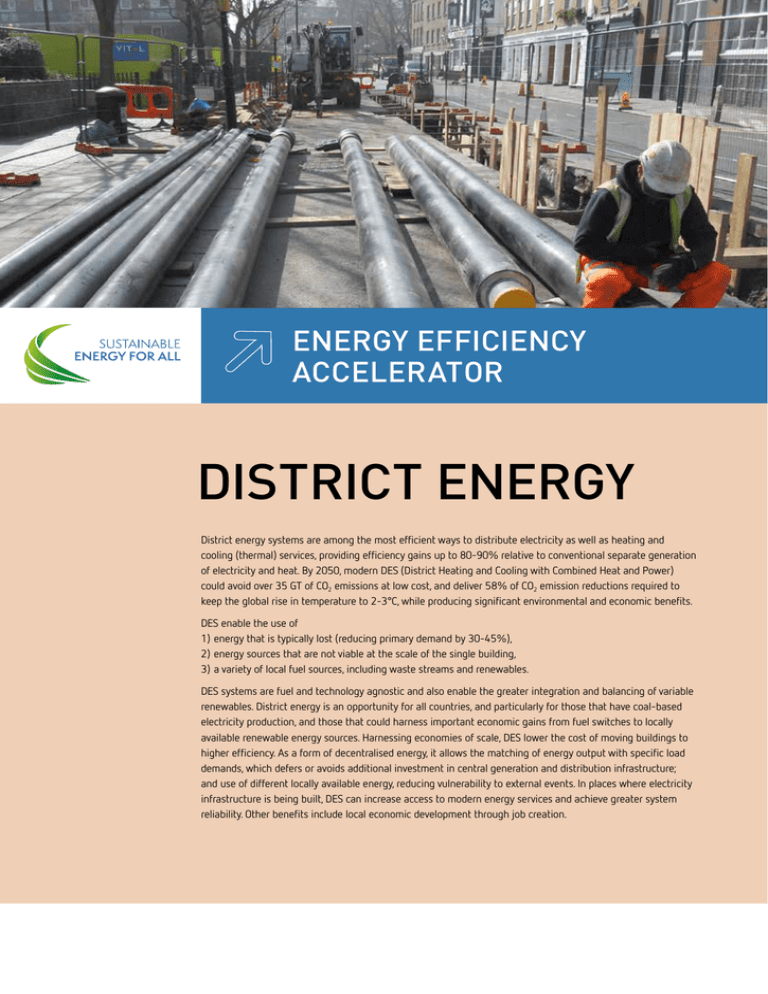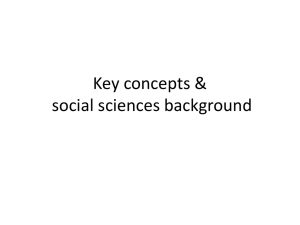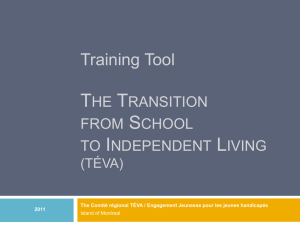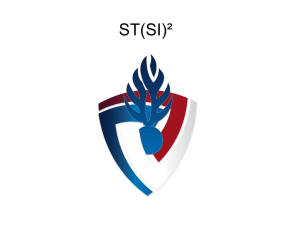Download the District Energy Flyer and read more
advertisement

ENERGY EFFICIENCY ACCELERATOR DISTRICT ENERGY District energy systems are among the most efficient ways to distribute electricity as well as heating and cooling (thermal) services, providing efficiency gains up to 80-90% relative to conventional separate generation of electricity and heat. By 2050, modern DES (District Heating and Cooling with Combined Heat and Power) could avoid over 35 GT of CO2 emissions at low cost, and deliver 58% of CO2 emission reductions required to keep the global rise in temperature to 2-3°C, while producing significant environmental and economic benefits. DES enable the use of 1)energy that is typically lost (reducing primary demand by 30-45%), 2)energy sources that are not viable at the scale of the single building, 3)a variety of local fuel sources, including waste streams and renewables. DES systems are fuel and technology agnostic and also enable the greater integration and balancing of variable renewables. District energy is an opportunity for all countries, and particularly for those that have coal-based electricity production, and those that could harness important economic gains from fuel switches to locally available renewable energy sources. Harnessing economies of scale, DES lower the cost of moving buildings to higher efficiency. As a form of decentralised energy, it allows the matching of energy output with specific load demands, which defers or avoids additional investment in central generation and distribution infrastructure; and use of different locally available energy, reducing vulnerability to external events. In places where electricity infrastructure is being built, DES can increase access to modern energy services and achieve greater system reliability. Other benefits include local economic development through job creation. MARKET BARRIERS DES are not new, and cost effective technologies are available today. Still, there are long-standing barriers to greater deployment of DES: •lack of awareness about benefits and savings; •lack of appropriate recognition of benefits by some green building certification programs (e.g. LEED), which favor building-scale energy solutions; •the lack of an agreed methodology to •lack of integrated infrastructure and land-use planning to match supply and demand, ensure a large, densely developed customer base to ensure viable project economics, mitigate load uncertainty (ensure future connections) and to minimize cost to end-user (anchor loads); •grid access and interconnection regulations; •high upfront capital cost; •lack of knowledge/capacity in structuring projects to attract the investments; •and a lack of access to patient capital. recognise energy saving and environmental benefits; However, cities and countries worldwide have successfully developed targeted policies that address the above market barriers; enhance long-term cost competitiveness; harness the private sector’s financing and delivery capability; and have succeeded in scaling up district energy systems, and fostering significant industry growth. MARKET SECTORS DES involve city governments, commercial, institutional and residential building owners, as well as engagement by the private sector. While DES generally benefit from the ability to utilize low operating cost energy sources, these systems require high initial investments to pay for capital construction costs, as with all major infrastructure investments. These costs can be managed under a utility ownership model which allows for upfront capital costs to be amortized over the long term and recovered through customer rates that are competitive with traditional forms of heating (i.e. electricity and natural gas). But a variety of economic models and business partnerships exist that provide viable structures to establish and manage district systems. Which model is best depends on objectives and preconditions. In public –led models, the government owns the bulk of new district energy infrastructure, but the technical design, construction and possibly even the operation is often contracted out to private firms. Co-operatives are increasingly popular often in the case of smaller scale projects, (up to 3,000 customers), and the plant may or may not be owned and operated by the energy users. In order to engage the private sector, projects need to capture at least 200-500 housing units, have sufficient density and/or a mix of uses and loads. If there is an anchor load nearby then this threshold can change. Public (government, education, healthcare buildings) and commercial (corporate and investor-owned real estate) building sectors can kick-start district energy delivery models that engage the private sector, as they provide anchor load, and require less coordination than the residential single family and multi-family house sector. From a review of successful cases, five DES “development types” are apparent: 1)New systems for new development projects, both greenfield and brownfield projects; 2)New systems in the existing built environment; 3)Upgrading and expanding existing institutional or multi-user district energy systems; 4)Upgrading and expanding existing single-user institutional systems to encompass surrounding development; 5)Establishing single-user institutional systems. EFFECTIVE DES POLICIES: FROM RESOURCE AND INFRASTRUCTURE PLANNING TO LAND-USE POLICIES Energy Mapping and Infrastructure Planning is the starting point to assess district energy opportunities, establish economic and technical viability, develop tailored policies and business models, and inform an overarching district energy strategy. Energy and resource mapping can also be used to build public awareness and engage the stakeholder necessary for effective project implementation. Policies that help create a market for DES include: benchmarking and disclosure requirements of building energy performance; incentives for energy efficient renovation and new construction; measures and standards that provide incentives for the electricity produced in district energy systems (e.g. CHP) with clear, consistent rules for connecting to the grid; priority dispatch; licensing exemptions for small scale generators; and policies that open energy markets to decentralized generators and internalize the public benefits of DES (FIT, net-metering, heat incentives). KEY STAKEHOLDERS The District Energy Accelerator will engage city/country partners to develop an integrated policy and investment roadmap for deployment of district energy systems (DES) in multiple jurisdictions and initiate city partnerships or ‘twinnings.’ These partnerships and city twinnings will allow city governments to share their policies and experiences and assist each other in policy planning and DES strategy development; and engage in a collaborative process with public and private sector stakeholders. The following are representative stakeholders that should be involved in the planning and implementation process: NATIONAL/STATE GOVERNMENT: CITY GOVERNMENT: BUSINESS: END-USERS: FINANCE INSTITUTIONS: EXPERTS: • Energy and environment ministries, • financial and fiscal departments, • utility commissions, • grid operators. • Elected officials, • planners and regulators, • building code officials, • energy or facility managers, • municipal utilities, • environmental services, • city networks that can facilitate city twinning. • Utilities and • Real estate • governments, • building owner associations, • hotel and retail chains. • World Bank, • regional development banks, • GEF, • finance institutions, • pension funds. • International and local NGOs, • industry groups, • national and local experts subsidiaries, • energy service and energy management companies, • engineering firms and technology providers, • local supply-chain companies. A recent renaissance of DES has led cities and utilities to deploy systems with the support of organizations such as EBRD, GEF, IEA, UNDP, UNEP, and environmental NGOs and think tanks, as well as green building councils and industry associations like IDEA and Euroheat & Power. UNEP is developing a handbook with ICLEI and UN Habitat on DES policies at the city level. International finance institutions such as the World Bank, IFC, EBRD, and regional/national development banks have gained experience with DES policy development and project implementation. Private financial institutions are providing project finance for the deployment of DES projects. There is a significant opportunity for DES scale up. COMMITMENTS Using the public-private collaboration model of the Energy Efficiency Accelerator platform, this Accelerator could facilitate the following commitments: [xx] cities will develop DES strategies, based on energy resource mapping, to roll out systems supplying [xx%] percent of their energy, and reduce [xx] tons of GHG emissions. NGOs and IGOs will provide policy tools, resources and expert assistance. Financial institutions will deliver [xx] amount of funding for policy roadmap development, implementation, project execution and performance tracking. Utility and energy service companies will commit to help deliver [xx] number of DES. Global and local businesses will offer energy audits and mapping to enable [10-15] cities to assess their DES potential. Other commitments comprise the quantification of the goal, baseline and impacts as well as the reporting of actions and progress. The key near-term milestone is securing a commitment from [10-15] city governments, supported by their national governments, [3-5] utilities / technology companies, and [3-5] finance institutions to participate in the DES Accelerator, and engage in city/country partnerships. The process and lessons learned can be captured in the Solutions Gateway created by ICLEI and UN-Habitat to build knowledge and share replication potential on a wider scale. City governments are an effective player, as they have regulatory authority over public procurement and land use, and often own or have stakes in local energy utilities. Through land-use policies, city governments can set: guidelines for urban development plans to consider district energy; service area bylaws that designate areas for district energy service providers; public and private rights-of-way and easements for district energy infrastructure installations; provide access to land, infrastructure, and waste streams; district energy connection mandates and compatibility requirements; development cost charges; and zoning to encourage high density and mixed use. Such land-use-related policies help aggregate, provide or guaran- tee minimum anchor loads for developments, and provide investor security and alleviate financial risks (customer retention/risk). City governments can also help by setting green building policies that allow developers to achieve requirements cost-effectively through connecting to DES; and by outlining local development strategies and climate action plans, harnessing DES potential for wide community development. © Islington Council ! ENERGY EFFICIENCY ACCELERATOR DISTRICT ENERGY NEXT STEPS An ad hoc working group will be formed to complete detailed planning. It will also facilitate the suggested process for the DES Accelerator and help recruit city, state and regional officials and national governments that wish to participate. Discussions are co-led by Danfoss and ongoing with leading private sector actors to join the initiative. This accelerator is initiated by UNEP in collaboration with ICLEI – Local Governments for Sustainability and UN-Habitat under the framework of Sustainable Energy for All. Communication material produced by UNEP as a contribution to SE4ALL. The Global Energy Efficiency Accelerator Platform is a partnership comprised of a large number of institutions, businesses and governments which include among others: Accenture, Asian Development Bank, European Bank for Reconstruction and Development, Inter-American Development Bank, ICLEI (Local Governments for Sustainability), International Copper Association, International Energy Agency, Johnson Controls, Philips, UNDP, UNEP, UN Foundation, World Business Council for Sustainable Development, World Bank (ESMAP), World Resources Institute. R www.se4all.org/energyefficiencyplatform/











